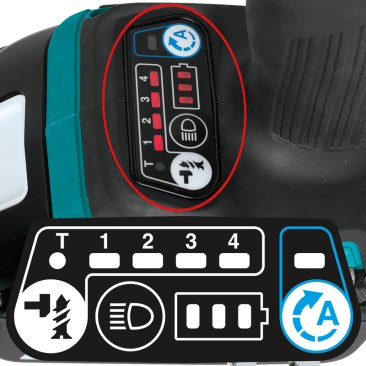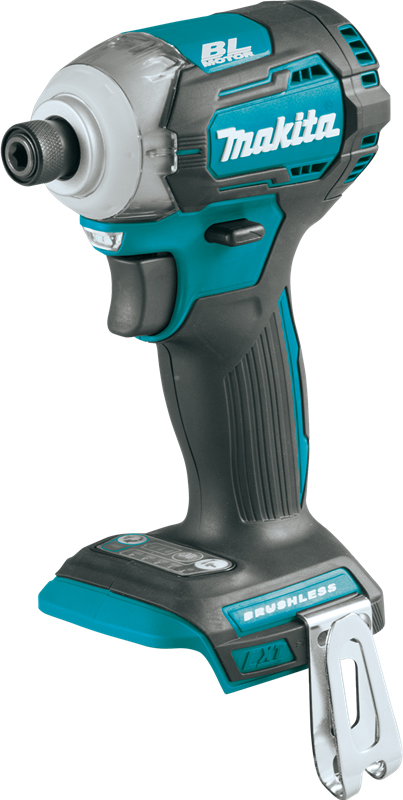Over time, I’ve watched impact drivers slowly filter in to what was a drill-driver world only. Early impacts were novelties on most jobsites. Soon, however, their power, speed, and efficiency started knocking corded and cordless drill-drivers back into the tool trailer.
Lockstep with that, I’ve watched as construction screws evolved and spread to seemingly every aspect of residential construction. Early impact drivers could handle the typical 3-inch wood (deck) screws that were fairly commonplace. But structural fasteners started evolving too. They grew more common and larger, requiring stronger drivers for their installation.
Tool manufacturers have done their part, delivering stronger and stronger tools that, at one time, would have been described as unleashing astonishing levels of speed and torque. As a result, the category entered what I’d call a musclebound phase: High -umph tools that can bomb in monster fasteners at blistering speeds. But what about areas requiring more control and finesse?
For the work I’ve encountered in recent years—everything for new construction and remodeling from form work to custom stain -grade millwork to a steel-clad custom home—I’ve found myself reaching for smaller capacity drill/drivers or screwdrivers for installing trim screws or hardware where the burly impact could result in overdrives or cammed-out screw holes or stripped heads. The impacts were just too powerful and too fast to risk damaging some of these more delicate assemblies, namely cabinet face-frame connections, interior trim assemblies, or door and window hardware installation.
Well, that’s over now.
Say hello to the Makita XDT12Z 4-speed impact driver.
On the surface, this unit is a standard 1/4-inch hex drive built on Makita’s full-size 18-volt battery platform. Its brushless motor delivers up to 1,550-inch-pounds of torque in a surprisingly compact shell. The real genius here, however, is Quickshift. This feature—which I use all the time—takes advantage of the brushless motor’s control circuitry to provide a 4-speed “transmission” so to speak, with a couple of other nifty tricks up its sleeve.
The base of the tool contains a small LED panel with three buttons. One LED bar shows battery charge level. The other displays the speed/power selection as well as what’s called T Mode. We’ll get to T Mode in a minute.
Pressing the power-adjustment button cycles you through the levels. For driving larger screws in framing applications like #10 x 3 or structural screws for roof framing (roof-framing tool review here by @AwesomeFramers) or deck ledgers or connections requiring maximum demand, Level 4 is the sweet spot. The driver delivers blistering speed and great torque, handling all but the largest structural fasteners you’re likely to encounter.
Still, it’s a 1/4-inch drive so it does have an upper limit (which I don’t often reach). As a frame of reference, old school 1/2- x 6-inch lags and 3/8- x 7 1/4-inch construction screws into white oak are beyond the tool’s scope. Really, it’s beyond the scope of the category. For these applications, you’re better served with a 3/8- or 1/2-inch impact wrench.
For the most part, it has the guts for the big stuff, but that’s not all I do. So, when I transition to the finer work, this is where this little giant really begins to sing.
I use a lot of trim screws, ranging from 1 1/4 inches to 5 inches. I also use cap-head screws and stainless steel exterior screws and I want those screws to go in precisely and be set uniformly. On interior trim, I want the screw set deep enough to accept filler but not so deep that it deforms the surrounding material or risks cracking. In exterior trim situations where the fasteners will be left exposed, I want to be able to set all of them to a uniform depth for aesthetics like we often do on removable screen panels and face-screwed decking. On Level 2, the driver sends 3-inch trim screws into poplar, Boral, pine, cedar, maple, and PVC, nicely. On this setting, the tool’s reaction torque at start-up—which can result in parts shifting if the tool twists too much—disappears. Then, as the screw is just about set where I want it, I can let off the trigger and deliver a slow, methodical finish. This perfectly snugs parts up and enables me to set the heads at just the right depth–repeatably.
For things like installing brass door hardware—expensive, soft metal where screws are easily damaged—I used to use a ratcheting screwdriver. Not anymore. I can dial the Makita (see our Makita track saw review here) down to Level 1 and install delicate finish hardware efficiently without concern.

Now for the nifty tricks up the Quickshift sleeve.
On the LED bar there’s an additional “T” for self-tapper mode.
If you’ve ever installed self-tapping sheet-metal screws, you know they require a high-speed start followed by a quick trigger release to set the screw without camming out the hole. I’ve done it plenty of times. In T Mode, there’s no guesswork or wasted time.
T Mode starts the driver at maximum rpm to pilot the hole. Then it senses the resistance change as the screw tip pierces the steel and quickly drops the rpm for cam out-free fastening over and over and over and over … you get it. No longer necessary: cat-like reflexes for multiple trigger pulls in a single, tiny fastener.
And while T Mode works well, there’s at least one limitation. It doesn’t function super well on thinner-gauge sheet metal (less than 30 ga or aluminum). It doesn’t seem to slow fast enough to avoid stripping. In medium- to heavy-gauge ductwork, I found the driver is sensitive enough to throttle back before camming the hole. In heavier-gauge metal—like the thousands of square feet of architectural metal siding and trim on a recent job—it performed reliably. For this heavier-gauge steel, I drove more than 3,500 1 ½-inch gasketed screws. In T Mode, it was an absolute dream. Pull the trigger, the screw screams as it pilots a hole. Then, abraca-brushless-dabra, the tool downshifts as the fastener threads into the sheathing, finally slowing down to a nice steady speed, enabling me to accurately set the gaskets just right.
Then there’s Auto Start; this feature is essentially the opposite of T Mode and is intended for large—longer than 3 inches or 5/16-inch or better diameter—structural screws. Pull the trigger, the unit starts spinning slowly. This allows you to accurately guide the start path of long fasteners—something kind of unruly at the tool’s maximum 3,800 rpm. As the fastener threads, the tool’s electronics sense increased resistance and deliver power and speed to match. This sends fasteners quickly to their final resting place while you move on to the next ones in line.
Hands down, this is my go-to driver. Out of all the options we have in the tool trailer or in the shop, it’s the one I reach for at the start of my day and is always within arm’s reach. The power, compact size, and ergonomics alone are enough to put it at the top of my list. Add its serious versatility and it’s a real darling.
I haven’t had the tool long, so I can’t speak to any kind of durability. However, I did own an early model released only in Japan. For more than three years, it has been absolutely punished with no ill effects whatsoever. I have little doubt this newer one will perform just as well.
Makita XDT12Z, get one.
